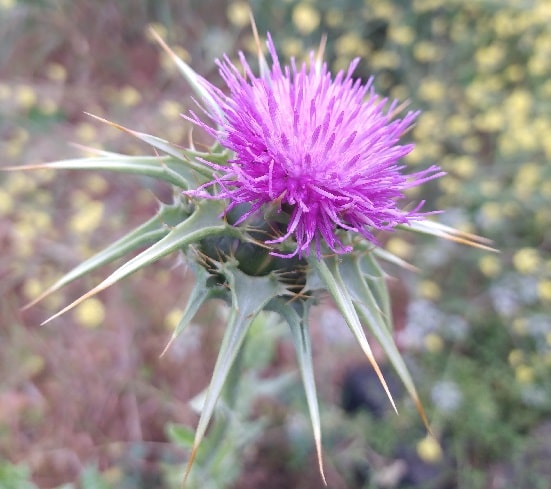Is there a thistle flower in America?
Milk thistle (Silybum marianum) is a herbaceous plant belonging to the daisy family. It is native to the Mediterranean region and grows widely in Turkey. Milk thistle has an erect and branched stem that can reach 30-100 cm in length. The leaves are green with white veins, green in color and spiny. The flowers are purple or white and bloom in clusters. Milk thistle is a plant known to have many health benefits. It protects the liver, increases bile production, regulates blood sugar and lowers cholesterol. It also has antioxidant, anti-inflammatory and anti-cancer properties.
Milk thistle seeds, leaves and root can be used in various ways. The seeds can be brewed as a tea, the leaves can be eaten in salads or as a vegetable and the root can be taken as a supplement.

Benefits of milk thistle flower
Protects the liver, Increases bile production, Regulates blood sugar, Lowers cholesterol, Has antioxidant, anti-inflammatory and anti-cancer properties, Facilitates digestion, Strengthens the immune system, Improves skin health, Helps to lose weight. Use of the milk thistle flower: Milk thistle seeds can be brewed as a tea. Milk thistle leaves can be eaten in salads or as a vegetable. Milk thistle root can be taken as a supplement. Milk thistle oil can be applied to the skin. Things to watch out for about milk thistle flower: Milk thistle may interact with some medicines. Pregnant or breastfeeding women should consult their doctor before taking milk thistle. Milk thistle may cause allergic reactions in some people. Do you get thistles in America?, Are thistles invasive in the US?, What country is thistles in?
How did the thistle come to America?
histles, despite their iconic Scottish association, aren’t native to North America. They most likely arrived unintentionally through various means during European colonization. Here are the two main theories for their introduction:
- Seeds in agricultural shipments: This is the most widely accepted theory. Thistle seeds may have gotten mixed in with shipments of crop seeds brought by European settlers. Since thistles are prolific reproducers with lightweight, wind-dispersal seeds, they would have easily established themselves in the new environment.
- Ship ballast: Ships often used rocks or soil as ballast to maintain stability during travel. Thistle seeds could have been present in this ballast material, unintentionally introducing them to North American ports.
Here are some additional details:
- The exact date of thistle arrival is unknown, but it’s believed to be sometime in the 1600s.
- There are many different thistle species, and some may have arrived through different means.
- The most common thistle in North America is likely the Canada thistle (Cirsium arvense), which is ironically not native to Canada either.
Is there a Milk Thistle Flower in the United States?
There is a Milk Thistle Flower in the United States! Milk thistle (Silybum marianum) is native to the Mediterranean region but has been introduced to many parts of the world, including North America. Early colonists likely brought it unintentionally, as mentioned earlier with thistles in general.
- Introduced by Early Colonists: As discussed previously, the most common way thistles arrived was through accidental introduction with European colonization. Milk thistle falls under this category.
- Wide Distribution: Milk thistle is now found throughout the eastern United States, California, and other parts of North America.
- Favorable Conditions: Milk thistle thrives in dry, rocky areas, which are found in many parts of the United States.
While Milk Thistle might not be readily available everywhere in the US, it’s established in many areas. If you’re interested in seeing Milk Thistle in person, you can check with local botanical gardens or search online resources for potential locations near you.





